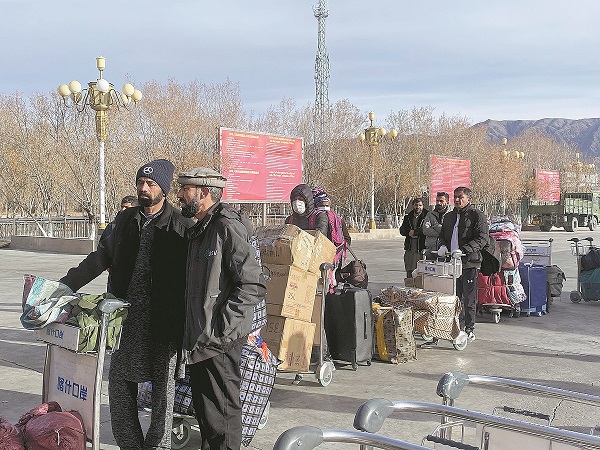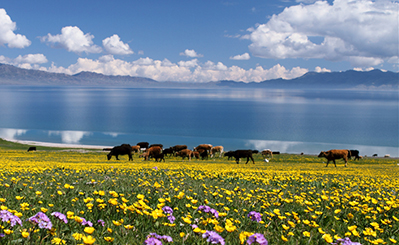Khunjerab Pass checkpoint sees plenty of traffic

Many Pakistanis line up to clear customs in Tashikurgan Tajik autonomous county, Xinjiang Uygur autonomous region, before leaving China through the Khunjerab Pass. [Photo/Chen Meiling]
Many Pakistanis lined up to leave China through the Khunjerab Pass checkpoint early this month ahead of winter access restrictions.
The checkpoint, in Tashikurgan Tajik autonomous county in Kashgar, Xinjiang Uygur autonomous region, is open on weekdays from April to November, but only opens temporarily from December to March when there is a special need.
Hundreds of Pakistani travelers lined up to clear customs in the county seat, 126 kilometers from the border crossing, with luggage and boxes filled with Chinese goods.
Saifullah Baig, a Pakistani businessman, has traveled through the pass for the past 30 years. He sells Pakistani handicrafts in China and returns to Pakistan with Chinese clothes and shoes, traveling between the two countries about 10 times a year.
"The services of immigration inspection and customs clearance are very good," he said. "The staff members worked till 3 am to help us."
He said that 30 years ago, about 20 to 40 people crossed the border each day that it was open, but that had now climbed to 200 to 300 while maintaining a high level of efficiency.
"China is very friendly to Pakistanis doing business here. China is the best friend of Pakistan. We are neighbors and family," he said, adding that he earns about 800,000 yuan ($109,000) a year.
Ismail Shah, a PhD student in Wuhan, Hubei province, was returning home through the pass.
"I chose this route because it's very near to my hometown," he said. "It takes about six hours to reach my home. It's very convenient and cheap."
He said his total trip cost was about 1,500 yuan, but that could have doubled if he had chosen to fly between the two countries.
At the waiting area outside the checkpoint, many Pakistanis boarded buses to Sust, where the Pakistani checkpoint is located.
A ticket costs just 225 yuan.
They are escorted on their 126 km trip to the border crossing, which is 84 km from Sust.
The pass, amid snowy mountains at an altitude of 5,100 meters, opened in 1982 as the only land port between China and Pakistan. But as one of the highest-altitude land ports in the world, it is subject to harsh natural conditions. In 2017, the Chinese checkpoint was moved 126 km downhill to Tashikurgan's county seat, which sits at an altitude of about 3,200 meters.
Since the resumption of passenger transport clearance on April 3, the number of people crossing the border via the pass has increased from over 100 a day to over 300. By Nov 13, the total stood at more than 42,000, up 63 percent compared with 2019, according to data from the Khunjerab immigration inspection station.
"In order to improve the efficiency of customs clearance for entry-exit vehicles and passengers, we're continuously optimizing the clearance measures, providing one-stop procedures and other convenient measures for the public and enterprises," said Song Xueliang, deputy director of the station's border inspection office.
Song added that special channels had been set up for elderly people, along with emergency channels for the injured, sick and rescue personnel, and channels for vehicles, drivers and passengers involved in projects linked to the Belt and Road Initiative.
Tian Guohua, director of the pass management committee, said: "The port is located at the core area for the China-Pakistan Economic Corridor and is an important gateway to South Asia and Europe. It will deeply integrate into the Belt and Road Initiative, and serve the region's opening-up to the outside world."
 Attractions
Attractions Dining
Dining Culture
Culture